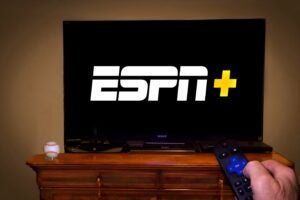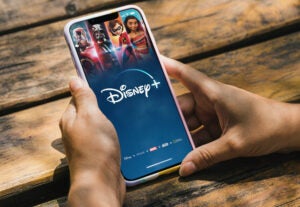Jimmy Kimmel lives on. Now Disney has a new headache: the YouTube TV blackout.
But Disney CEO Bob Iger told investors during the company’s most recent earnings call on Thursday morning that Disney is “working tirelessly” to strike a deal that will end the ongoing carriage dispute that’s led to more than 20 of its channels going dark on YouTube TV.
Disney’s CFO, Hugh Johnston, however, was a bit less optimistic: “These discussions could go for a little while,” he said.
In the meantime, Disney reported mixed results for Q4. (Disney’s fiscal year runs through September, rather than December.)
Q4 revenue was nearly flat at $22.4 billion, a 3% YOY increase, which was just shy of analyst expectations of $22.83 billion.
This was enough to scare off investors. Disney’s stock dropped by approximately 9%.
Be prepared
Meanwhile, plans proceed apace to unify Disney’s streaming services, as it phases out the Hulu app. ESPN will still have its own app, but its content will also be available within Disney+, the way Hulu content currently is.
When Disney first entered the streaming market, Iger insisted that it made sense to have a separate app for each type of content – Disney, Hulu and sports – since each would supposedly attract a different audience.
But, apparently, that isn’t entirely true. Disney’s healthiest subscribers – those with the lowest churn rate – tend to bundle Disney+ with another offering, Iger told investors.
That’s true for both internal bundle offerings, like ESPN and Hulu, and external ones, like Disney’s partnership with Warner Bros. Discovery.
New bundles with other companies are on the horizon, Iger said.
A whole new world
ESPN came up repeatedly during the call as one of Disney’s main revenue drivers, marking the entertainment company’s continued departure from its classic princess movies and anthropomorphized singing animals.
Now that ESPN’s full suite of networks and services are available as a bundle, Disney has leaned in by adding features such as access to live game stats, betting and fantasy sports.
The sports offering is also “working for advertisers,” said Iger, due to the DTC data that Disney collects from its users, which has attracted “both more advertising and new advertisers to the service.”
But the NBA and NFL don’t just provide Disney with valuable data; they attract audiences at scale, Johnston noted. This is a win for advertisers, which, by proxy, is a win for Disney. More advertisers are “strategically beneficial to us as well,” he said.
Indeed, Disney saw an uptick in ESPN advertising revenue, despite a YOY net loss in overall advertising revenue, which is at least partially related to a decrease in political ads, since 2025 isn’t a major election year.
“As we look ahead,” Iger said of the ESPN launch, “we believe we’ve created a product that is very, very consumer-friendly, very advertiser-friendly and actually works both for the traditional distribution system and for what I’d call the DTC ecosystem – if there is such a thing.”
















